Many claim to know the story of Peter Pan, but here’s a short recap if it’s been some time since you read it: Peter Pan takes Wendy and her brothers to Neverland, where they meet the Lost Boys, fairies, and other magical creatures. They have a few adventures while they are there until they are kidnapped by the evil pirates under the command of Captain Hook. Peter rescues the group and returns Wendy and her brothers to their home.
For the purposes of this post, I am only drawing from the original novel by J. M. Barrie because the cleaned-up movies from our childhoods overlook much of Pan’s darker side.
We all know that Peter Pan kills pirates. I get it, they’re the bad guys. That’s not up for discussion. Instead, let’s take a closer look at how Peter Pan treats those closest to him: The Lost Boys, Wendy, and Tinker Bell.
The Lost Boys
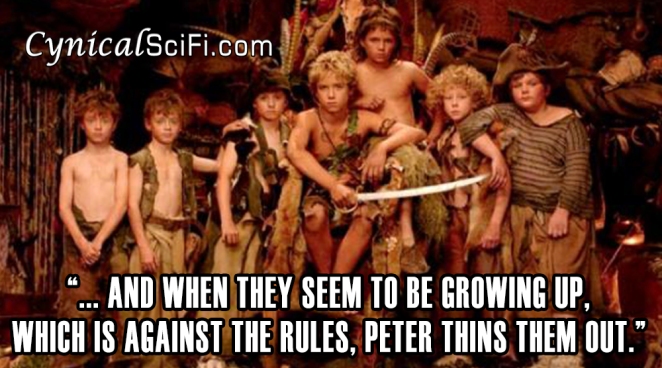
“… and when they seem to be growing up, which is against the rules, Peter thins them out.” – PETER PAN, J. M. Barrie
Peter’s Lost Boys are his troop of soldiers and playmates. Like any general, Peter Pan makes rules for them to follow, albeit far weirder and harsher than most people know.
Appearance
They are forbidden by Peter to look in the least like him. (Chapter 5)
Knowledge
Peter never quite knew what twins were, and his band were not allowed to know anything he did not know, so these two were always vague about themselves, and did their best to give satisfaction by keeping close together in an apologetic sort of way. (Chapter 5)
Speech
It was only in Peter’s absence that they could speak of mothers, the subject being forbidden by him as silly. (Chapter 5)
Play
The difference between him [Peter] and the other boys at such a time was that they knew it was make-believe, while to him make-believe and true were exactly the same thing. This sometimes troubled them, as when they had to make-believe that they had had their dinners. If they broke down in their make-believe he rapped them on the knuckles. (Chapter 6)
Thins Them Out
A rap on the knuckles wasn’t the worst form of punishment that Peter handed down on his Lost Boys. There are several sections in the book that suggest that he routinely killed Lost Boys, or at least maimed them.
All wanted blood except the boys, who liked it as a rule, but to-night were out to greet their captain. The boys on the island vary, of course, in numbers, according as they get killed and so on; and when they seem to be growing up, which is against the rules, Peter thins them out; but at this time there were six of them, counting the twins as two. (Chapter 5)
The “thins them out” quote is a common reference. Some feel that it means that he brings Lost Boys back to where they came from, but other quotes suggest simpler solutions. The best example of this is when Tootles shot Wendy with an arrow because he mistook her for a bird (and because Tinker Bell tricked him and Peter didn’t escort Wendy to the island safely). Peter discovered Wendy’s supposedly dead body and raised an arrow to stab Tootles out of anger.
“Oh, dastard hand,” Peter said, and he raised the arrow to use it as a dagger.
Tootles did not flinch. He bared his breast. “Strike, Peter,” he said firmly, “strike true.”
Twice did Peter raise the arrow, and twice did his hand fall. “I cannot strike,” he said with awe, “there is something stays my hand.”
All looked at him in wonder, save Nibs, who fortunately looked at Wendy. (Chapter 6)
The wild part is that all of the Lost Boys are shocked that Peter didn’t kill him. Even Peter is surprised that he didn’t stab Tootles to death. This quote, more than any other, suggests that it was common practice for Peter Pan to kill the children who depended on him for survival.
You Simply Must Fit
Horrors come in all forms and this next one is called callous mutilation. The trees that Peter and the Lost Boys use to slide into their hideout are hollow and each child has his or her own tree. That, in itself, is not a problem. The horror comes when a child doesn’t fit their tree.
But you simply must fit, and Peter measures you for your tree as carefully as for a suit of clothes: the only difference being that the clothes are made to fit you, while you have to be made to fit the tree. Usually it is done quite easily, as by your wearing too many garments or too few, but if you are bumpy in awkward places or the only available tree is an odd shape, Peter does some things to you, and after that you fit. Once you fit, great care must be taken to go on fitting, and this, as Wendy was to discover to her delight, keeps a whole family in perfect condition. (Chapter 7)
Some will argue that the “perfect condition” phrase means that they are working out to stay in shape. If some kids need to lose weight to fit a tighter tree, that would be fine. But that isn’t what is written and no amount of exercise is going to fit your “awkward places” into a tree with an “odd shape.”
Peter and Wendy
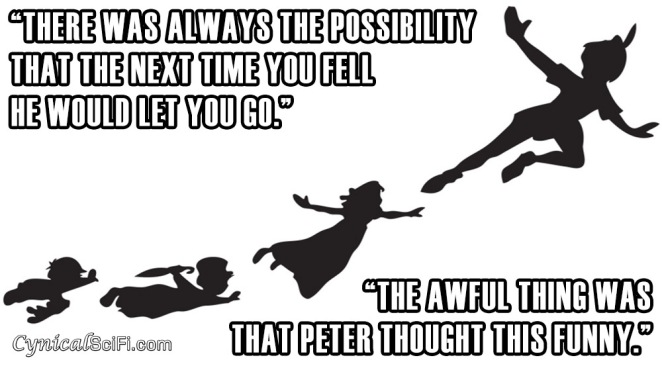
“The awful thing was that Peter thought this funny.” – PETER PAN, J. M. Barrie
The romance between Wendy and Peter Pan is a one-sided lie. It is true that Peter said that “one girl is worth twenty boys,” but he only said this to convince her to join him in Neverland. He intrigued her by saying that she can do motherly things for him and his Lost Boys like tucking them in and telling them stories. Once her told her what she wanted to hear, she was his.
“Oh, the stories I could tell to the boys!” she cried, and then Peter gripped her and began to draw her toward the window. (Chapter 3)
Not only did he not protect her well when she was in Neverland (remember the arrow to the chest and the kidnapping?), he didn’t even watch out for her on the way to Neverland. While leading Wendy and her brothers to Neverland, Peter would fly off to have other side adventures. He’d return to them, having already forgotten who they were.
Indeed, sometimes when he returned he did not remember them, at least not well. Wendy was sure of it. She saw recognition come into his eyes as he was about to pass them the time of day and go on; once even she had to call him by name. (Chapter 4)
Worse yet, Peter had little regard for their safety as they flew beside him. When one of them would fall asleep, he’d make a game out of catching them before they died.
Certainly they did not pretend to be sleepy, they were sleepy; and that was a danger, for the moment they popped off, down they fell. The awful thing was that Peter thought this funny.
“There he goes again!” he would cry gleefully, as Michael suddenly dropped like a stone.
“Save him, save him!” cried Wendy, looking with horror at the cruel sea far below. Eventually Peter would dive through the air, and catch Michael just before he could strike the sea, and it was lovely the way he did it; but he always waited till the last moment, and you felt it was his cleverness that interested him and not the saving of human life. Also he was fond of variety, and the sport that engrossed him one moment would suddenly cease to engage him, so there was always the possibility that the next time you fell he would let you go. (Chapter 4)
Tinker Bell
So Peter Pan had little regard for human life. What about his permanent sidekick, Tinker Bell? They were inseparable for so long that he had to care about her, right? Wrong. After Peter Pan begrudgingly brought Wendy and her brothers home, he promised to take her back to Neverland every spring so that she can clean his house. She was oddly happy about this and looked forward to catching up with him. However, by the very next year, Peter Pan had forgotten both Captain Hook and Tinker Bell completely.
She [Wendy] had looked forward to thrilling talks with him about old times, but new adventures had crowded the old ones from his mind.
“Who is Captain Hook?” he asked with interest when she spoke of the arch enemy.
“Don’t you remember,” she asked, amazed, “how you killed him and saved all our lives?”
“I forget them after I kill them,” he replied carelessly.
When she expressed a doubtful hope that Tinker Bell would be glad to see her he said, “Who is Tinker Bell?”
“O Peter,” she said, shocked; but even when she explained he could not remember.
“There are such a lot of them,” he said. “I expect she is no more.” (Chapter 17)
Is Peter Pan a Sociopath?
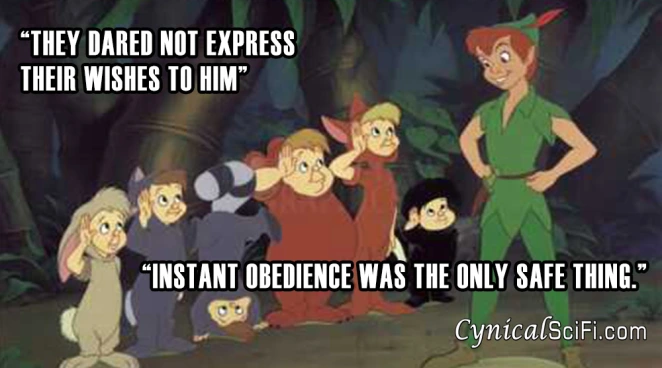
“They dared not express their wishes to him. Instant obedience was the only safe thing.” – PETER PAN, J. M. Barrie
This, of course, is the big question. Assuming he would sit still for observation, let’s run through the six qualifying traits for diagnosis of antisocial personality disorder as listed on the md-health.com site.
According to ICD-10 criteria, presence of 3 or more of the following qualifies for the diagnosis of antisocial personality disorder (~sociopathy):
- Callous unconcern for the feelings of others.
- Gross and persistent attitude of irresponsibility and disregard for social norms, and obligations.
- Incapacity to maintain enduring relationships, though having no difficulty in establishing them.
- Very low tolerance to frustration, a low threshold for discharge of aggression, including violence.
- Incapacity to experience guilt or to profit from experience, particularly punishment.
- Markedly prone to blame others or to offer plausible rationalization for the behavior that has brought the person into conflict with society.
Even though all he needed was “3 or more” of the traits on that list to qualify, there is evidence in J. M. Barrie’s original novel for each of the six. However, there are problems with diagnosing this fictional character.
- I am not a professional in the field of psychology, nor do I claim to be.
- Peter Pan doesn’t age but may still qualify as a juvenile.
In children and teenagers (age <18 years), the “sociopathy traits” are diagnosed as conduct disorder. Conduct disorder diagnosis is changed to antisocial personality disorder if the traits persist even after attaining the age of 18 years. (md-health.com, 2015)
Peter Pan could very well be over one hundred years old, but is still a child for all intents and purposes. Fortunately (unfortunately?) there are warning signs of deeper psychological issues aside from the disregard for and killing of others.
Peter Pan’s Night Terrors
Sometimes, though not often, he had dreams, and they were more painful than the dreams of other boys. For hours he could not be separated from these dreams, though he wailed piteously in them. (Chapter 13)
Although the quote includes the phrase “not often,” he has another episode two chapters later.
He [Peter] fell asleep by the side of Long Tom. He had one of his dreams that night, and cried in his sleep for a long time, and Wendy held him tightly. (Chapter 15)
These events sound quite a bit like night terrors, and the fact that they are recurring could signal larger issues.
A post by Claire Jones on ScienceBasedMedicine.org describes night terrors in the following way: “The child appears to be sleeping soundly when suddenly they begin screaming. They are red faced and sweat profusely, reflecting the increase in autonomic nervous system activity. Their hearts are racing. They may even jump out of bed as if fleeing from some invisible monster and they are inconsolable or very confused and disoriented if awakened.”
James Gallagher, Health and Science reporter for BBC News, wrote an article in March of 2014 reviewing research by the University of Warwick that suggested a “long-term problem with nightmares and terrors was linked to a higher risk of mental health problems.” He concludes that the link between night terrors and psychoses is “not clear,” but that “nightmares may act as an early warning sign of future, more serious, problems.”
The Curse of Peter Pan
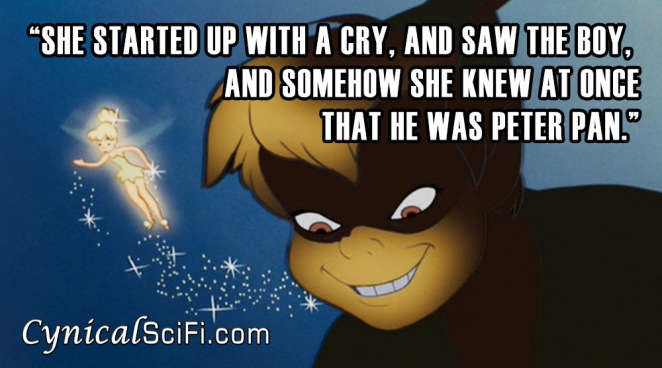
“She started up with a cry, and saw the boy, and somehow she knew at once that he was Peter Pan.” PETER PAN, J. M. Barrie
When I first read Peter Pan as a child, I was swept away by how fun it would be to join the Lost Boys in Neverland. Playing games and fighting bad guys all day seemed like the ideal way to spend a childhood. Twenty years and one child later, I read it again and found that I couldn’t have been more wrong. It was suggested that the Lost Boys were unwanted in some way, but Wendy and her brothers had loving parents who were devastated by the disappearance of their children. Wanted or not, these children deserved a better caretaker than the abusive, child-murdering, potentially sociopathic Peter Pan.
It was with all this in mind that I wrote my first book, Captain James Hook and the Curse of Peter Pan. Along with my co-author, I wanted to pull back the curtain on this much-loved character and show the world how dangerous he truly is. I am happy with our successes, as this darker perspective has taken root in many written and visual re-imaginings since our book’s publication in June of 2012.
Why So Cynical?
It never hurts to take a critical look at what you see everyday. You may find new ways to understand what you believe you already know so well. Share or comment below with your thoughts.
References
- Peter Pan full text: http://www.gutenberg.org/files/16/16-h/16-h.htm
- http://www.md-health.com/sociopath-traits.html
- https://www.sciencebasedmedicine.org/nightmares-night-terrors-and-potential-implications-for-pediatric-mental-health/
- http://www.bbc.com/news/health-26385274
Author’s Note
I was recently made aware that a different blogger posted an article on this topic two months prior to the publication of this one. These articles are disturbingly similar and I will state plainly that I in no way saw this article prior to writing my post. What is written above comes directly from my my old notebooks and emails that I shared with my writing partner to justify my rationale for Captain James Hook and the Curse of Peter Pan, a book that we published in 2012. At the time, I was doing a few interviews and wanted to refer people back to my thoughts in print. In spite of not having any connection to the other article, I have edited my post’s original title and will paste the link to that post here: Proof that Peter Pan is a Sociopath Happy Reading!
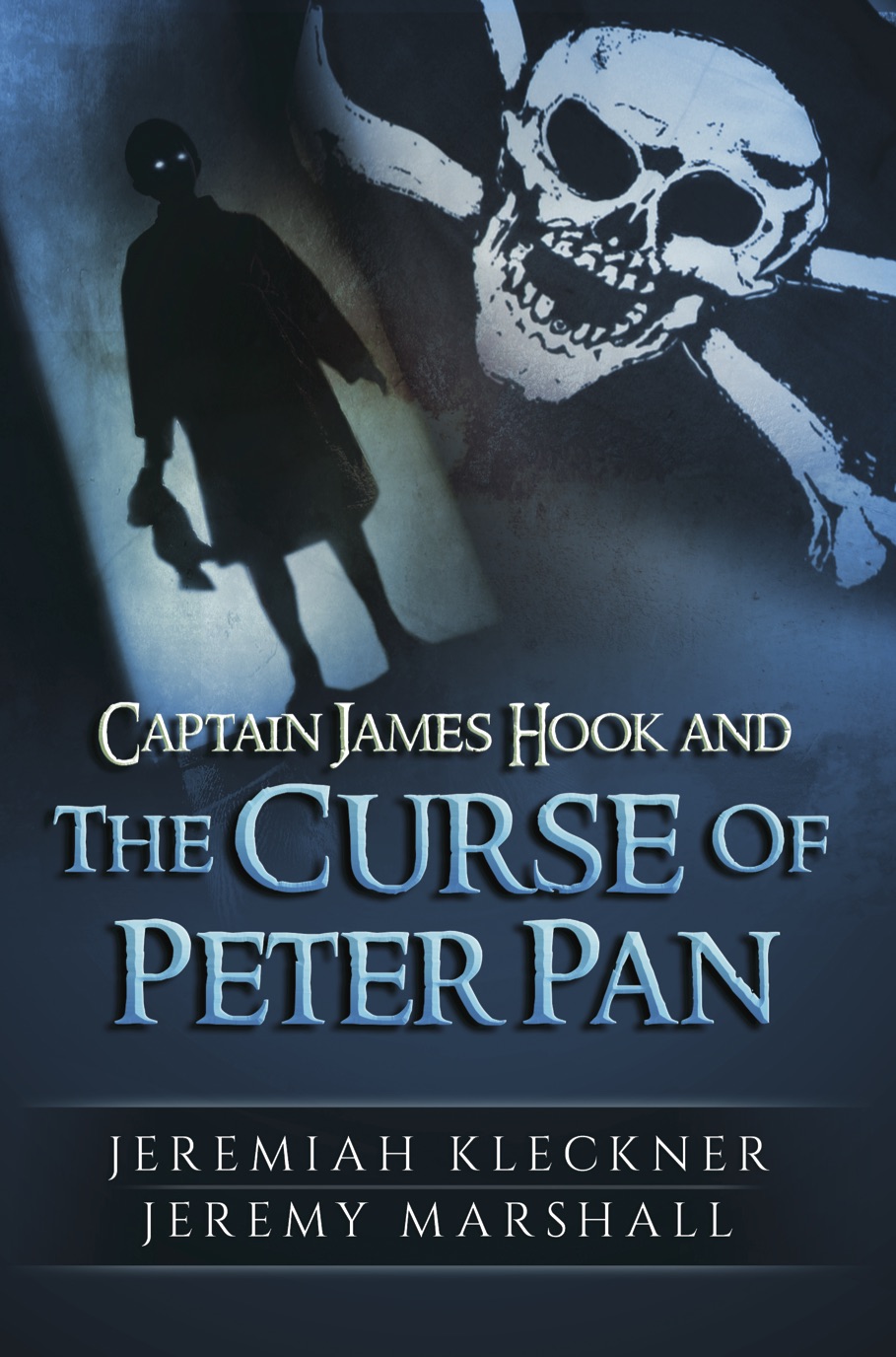
I like this. not many know the story is dark and Peter himself is quiet disturbed. he draws people in with his darkness. I liked that Once upon a time made him dark. sick of so many thinking he was so light hearted when actually he was dark and dangerous. great job!!! I can’t wait to read this book! 😉
I just loved this so much, an amazing post! I think it’s interesting to take a critical look at things most people take for granted and question the “good” and “bad” characters in this way. Good and bad cannot be divided easily.
It is wild that he and the overall story is something many teens look up to as being perfect. Me being a teen myself i see this alot. I love to write and i plan on doing a story pertaining to the darkside of Peter pan. I am very intrigued by this information. If possible i would love to discuss the subject more deeply, however i am not sure if there is anything you didnt cover in this.
It’s more than just teens who completely misunderstand that story world. Check out the article that I linked to in the author’s note. There’s some really great information there. Email me if you want to set up a conversation (with mom and dad’s permission, of course). JeremiahKleckner@gmail.com
I find it funny now people realize this, when I first read the book i realize there were many parts that didn’t seem right.That’s the reason I like the story of Peter Pan you get tiny hints that neverland wasn’t heaven..